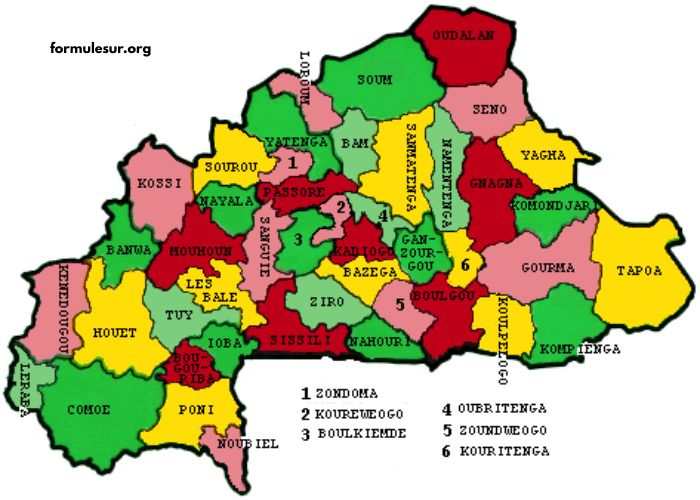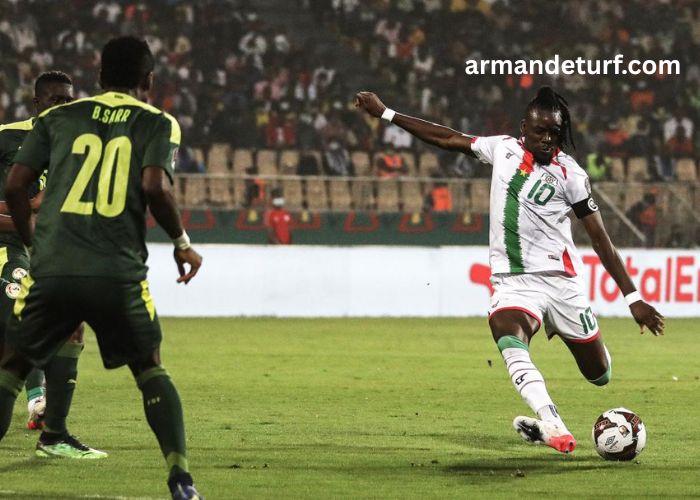Carte Du Burkina Faso
Burkina Faso, a landlocked country in West Africa, offers a rich blend of culture, geography, and regional diversity. A deeper look at the Carte Du Burkina Faso reveals far more than borders and cities—it opens up an understanding of its heart and history.
Whether you’re planning travel, doing research, or simply curious about this vibrant country, studying the Carte Du Burkina Faso gives you a unique perspective. From deserts in the north to savannas in the south, every area tells a different story.
What Information Does The Carte Du Burkina Faso Show?
The Carte Du Burkina Faso is a valuable visual tool that outlines the geographical, political, and cultural landscape of Burkina Faso. It highlights the different administrative regions, major cities like Ouagadougou and Bobo-Dioulasso, main roads, rivers, and national borders that define the country. Each region shown on the Carte Du Burkina Faso has its own unique identity and natural features, offering insight into how people live and travel in different parts of the nation.
Additionally, the Carte Du Burkina Faso can include various types of maps, such as topographic, relief, and thematic maps that focus on elements like population density, climate, and land use. Whether you are an academic, tourist, student, or policy maker, the Carte Du Burkina Faso helps make strategic decisions, gain historical context, or understand current events by showing where things are and how they connect.
How Many Regions Are Displayed On The Carte Du Burkina Faso?
The Carte Du Burkina Faso displays 13 official administrative regions, which are further divided into provinces and departments. Each of these regions has its own capital and local governance, and this division plays a vital role in how government services are distributed. From the Centre Region where the national capital Ouagadougou lies, to the Hauts-Bassins Region that houses Bobo-Dioulasso, each area marked on the Carte Du Burkina Faso has economic and cultural significance.
These 13 regions include areas such as Boucle du Mouhoun, Cascades, Centre-Est, and Sud-Ouest, all of which are clearly labeled and color-coded on most versions of the Carte Du Burkina Faso. These divisions help in understanding regional differences and enable researchers and travelers alike to plan their activities with precision, using the Carte Du Burkina Faso as a reliable guide.
What Can You Learn About Terrain From The Carte Du Burkina Faso?
By examining the Carte Du Burkina Faso, users can gain a thorough understanding of the country’s terrain and physical geography. The northern part of the map often shows arid and semi-arid regions, characteristic of the Sahel, where desertification is a concern. In contrast, the southern zones of the Carte Du Burkina Faso display more greenery and forested areas, which are known for agriculture and rainfall.
Relief maps within the Carte Du Burkina Faso reveal plateaus, river basins, and slight elevation changes that define the Burkinabé landscape. This variation in topography explains differences in climate and land use throughout the country. Whether you’re analyzing water sources like the Volta rivers or mapping transport routes, the Carte Du Burkina Faso gives a detailed geographical breakdown that serves numerous purposes across industries and disciplines.
How Is The Carte Du Burkina Faso Used In Education And Research?
In schools and universities, the Carte Du Burkina Faso serves as a key educational resource that helps students learn about their nation or region of interest. Geography classes often use the Carte Du Burkina Faso to teach map-reading skills, while history and political science courses may use it to discuss colonial boundaries, migration patterns, or electoral divisions. Its utility in education is vast because it brings abstract concepts into visual and spatial context.
For researchers, the Carte Du Burkina Faso supports in-depth fieldwork, policy analysis, and development planning. Whether it’s tracking disease spread, planning irrigation systems, or monitoring population growth, the Carte Du Burkina Faso is often used alongside other data to produce actionable insights.
This map becomes a foundational element in understanding broader national and regional trends, making the Carte Du Burkina Faso a must-have tool in academic and policy-making environments.
Can The Carte Du Burkina Faso Be Used For Travel And Tourism?
Absolutely, the Carte Du Burkina Faso is extremely helpful for travel and tourism. For those exploring Burkina Faso for the first time, the map highlights all the major transport routes, airports, tourist attractions, and protected areas such as national parks. Tourists can identify how far cities are from one another, estimate travel times, and locate services like hotels or tourist offices using the Carte Du Burkina Faso as a guide.
Additionally, travel agencies and tour guides often rely on a detailed Carte Du Burkina Faso to plan itineraries that include heritage sites, festivals, and nature reserves. Regions such as the Centre-Sud and Cascades, known for their culture and scenic beauty, are easier to explore when you use a well-marked Carte Du Burkina Faso. This map doesn’t just guide people physically; it enriches their journey by providing cultural and logistical context.
Are Digital Versions Of The Carte Du Burkina Faso Available?
Yes, digital and interactive versions of the Carte Du Burkina Faso are now widely accessible online. These modern maps can be zoomed, layered, and filtered to show specific types of data like weather patterns, election results, or infrastructure development. With just a few clicks, users can customize the Carte Du Burkina Faso to suit their particular needs, whether they are viewing it on a smartphone, tablet, or desktop.
Government agencies, NGOs, and private developers use digital versions of the Carte Du Burkina Faso for planning and monitoring purposes. Satellite imagery and real-time data make the Carte Du Burkina Faso even more powerful in helping to make data-driven decisions. The shift to digital mapping means the Carte Du Burkina Faso is no longer a static tool but an evolving, interactive resource for anyone interested in Burkina Faso.
Conclusion
In conclusion, the Carte Du Burkina Faso is far more than a simple map—it is a comprehensive tool that serves multiple purposes across education, research, tourism, and governance. Whether you are seeking to understand the physical terrain, regional divisions, or cultural layout of Burkina Faso, the Carte Du Burkina Faso provides unmatched insight and clarity.
As both a printed and digital resource, the Carte Du Burkina Faso continues to play a vital role in informing decisions and expanding knowledge about this remarkable West African nation. Understanding and using the Carte Du Burkina Faso effectively opens the door to appreciating the country’s complexity, beauty, and strategic potential.



